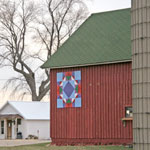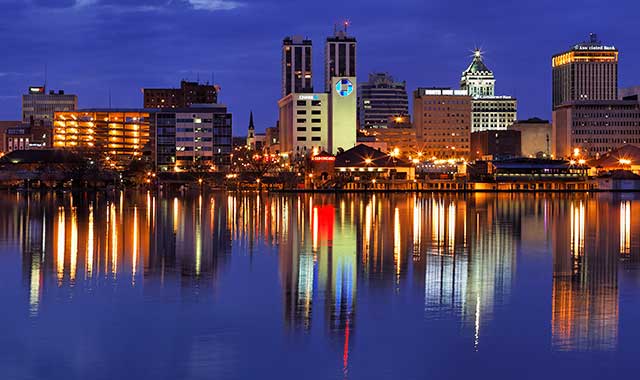Discover these unique destinations that reflect the genuine character of our region.

Quilt Barns of McHenry County
Various locations, McHenry County, Ill.,
McHenry County Historical Society, (815) 923-2267, mchsonline.org/quilted_barn_program
In 1999, the McHenry County Historical Society (MCHS) began its Barn Registration Program, to record and preserve the number and types of barns that once dominated the county’s landscape. In 2007, the McHenry County Quilted Barns Project was introduced to the county’s Art Work Sub-Committee, by a member of the MCHS. The Committee immediately recognized it as a perfect way to preserve the county’s agricultural roots, support its current farm industry, and promote public arts.
Quilts represent family history and community heritage; quilt patterns on barns date back to Colonial times. The new movement dates back to Ohio, 2001, and as of 2010, nine states offered quilt trails. It combines the tradition and beauty of quilt design with the long-lasting durability of American barns and their versatility as showcases for public art. In the 1800s, advertisements were painted on many barns.
Traditional patterns, such as Flying Geese, Bear Paw, Log Cabin, Hens & Chicks and Wedding Ring, mostly reflected the quilter’s surroundings and celebrated life passages. So far, 11 McHenry County barns display 8×8-foot wood quilt squares. Eligible buildings – not only barns, but corn cribs and other rural structures – must be at least 50 years old, sturdy and permanent, and reflect the agricultural heritage of the county.
For a list of participating barns, or to download registration forms, visit mchsonline.org.

Garfield Farm Museum
3N016 Garfield Road, La Fox, (630) 584-8485, garfieldfarm.org
Elva Ruth Garfield, the last Garfield to own this 281-acre, 1840s farmstead, founded the museum in 1977, to preserve America’s prairie farm heritage. She seems to have accomplished her goal: It’s on the National Register of Historic Places.
Three 1840s buildings have survived: an 1842 hay and grain barn; a horse barn from 1849; and a brick inn (below), built in 1846 for teamsters and other travelers. Three other barns, built between 1860 and 1902, are also on site, and smaller structures have been constructed or moved to the farm.
Annual events include 1840s Days, Harvest Days, an heirloom garden show, antique shows and sales, a rare breeds show and the Homespun Holiday Market. Seminars and lectures cover topics like the history of corn, historic barns, natural land management and fruit tree grafting. Participation opportunities such as driving a team of oxen or digging at an archeological excavation are available. Also offered are barn dances and picnics; prairie walks; and diverse workshops from gardening to playing the dulcimer.
The museum is open by appointment year-round, and for drop-in tours Sun. and Wed., 1-4 p.m., June through September. ❚

Sri Venkateswara Swami Temple of Greater Chicago
1145 W. Sullivan Road, Aurora, (630) 844-2252, balaji.org
With its artistic statues and distinctive architecture, this is one of only three Hindu temples in the United States. It was built in 1985 on donated land.Visitors can take in the beauty of the temple and experience its distinctive sights and sounds. The main entry is called the Rasha Gopuram; the central hall is Maha Mandapam; and the hall in front of the deities is Artha Mandapam. Only priests are allowed inside the main shrines, or Sannidhis. The statue of the main deity, Sri Venkateswara, closely resembles the original in India.
In the temple are other shrines, with lifelike statues representing a variety of deities. Guides are available to explain religious customs and services and to answer questions. A café offers authentic, vegetarian Indian food, and there is a gift shop. Please note: No photos of deities are allowed, and out of respect, shoes and coats are removed in designated areas.
Prior to its construction, devotees from the Chicago area had to travel to Pittsburgh to have “darshan of Sri Venkateswara,” or “a glimpse of the Lord.” The architect teamed with an Indian temple construction expert for the design, which melds ancient Shilpa shastra – standards for religious Hindu iconography – and modern architectural technology.
The temple hosts many cultural events, and a gazebo, auditorium and dining hall are available for rent. It’s open daily from 9 a.m.-9 p.m. ❚




















































